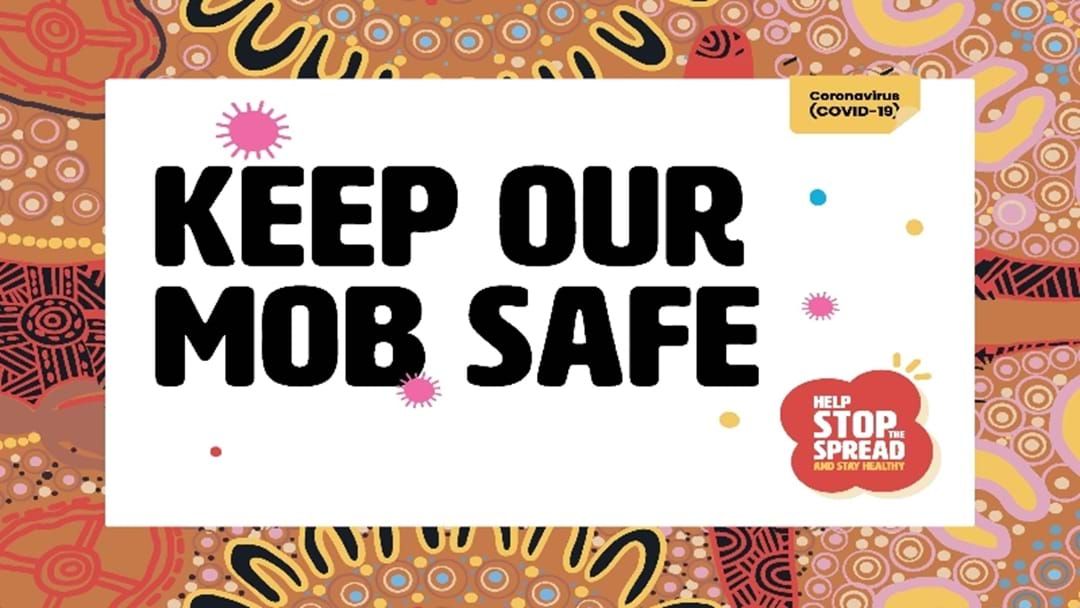Vulnerable Indigenous Communities Exposed As Arnhem Land Locks Down
A cavernous gap

AusGov
The gap in vaccine coverage between Aboriginal and Torres Strait Islander people and non-Indigenous Australians continues to leave vulnerable communities exposed.
As vaccination rates among Indigenous Australians continues to lag, with some regions still less than 50% fully vaccinated, it seems that hesitancy, complacency, and loose public health messaging are holding local vaccination efforts at ransom.
Stay up-to-date on the latest news with The National Briefing - keeping you in the loop with news as it hits
RACGP Aboriginal and Torres Strait Islander Faculty Chair Professor Peter O’Mara told newsGP a lot of the issues stem from the government not prioritising Indigenous Australians during the rollout.
"They acknowledged that we were high risk but didn’t really take action and I think that’s really disappointing," he said.
"They did around some of the other populations – like elderly people and people in residential aged care facilities, and of course they should have done that as well – but part of my concern from the beginning was that we needed to change the narrative, because Indigenous people were just tacked on to the end of conversations."
‘I never really heard anything significant about “this is what we need to do” from the government in terms of working with our communities," Prof O'Mara said.

It comes as Northern Territory health announced on Monday, a seven-day lockdown for Galuwin’ku (Elcho Island) and a snap 72-hour lockdown for Yirrkala from 2pm local time today.
Of the 284 Covid cases detected in the Northern Territory on Monday, 19 cases are in the community of Galuwin’ku.
"Our vaccine rates on the islands are OK but slightly lower than other East Arnhem communities. This is a very isolated part of the Northern Territory, so we have many people there with complex needs," Deputy Chief Minister Nicole Manison said.
"What we want to do is limit the movement of people in and out of Galiwin’ku, the main community there, there are a lot of people who move amongst each other on the island. We want to make sure we slow the spread of Covid there. That is really important."- Minister Manison
"We think it will be very difficult to eliminate Covid from Elcho islands and Galiwin’ku. That is why we are putting in this lockdown for seven days to make sure we can do this important work around testing and tracking the virus where we can and making sure we slow that spread," she confirmed. "
And importantly, help as many people stay on the islands as possible because we know people want to stay close to their home."
Meanwhile, as some jurisdictions like Western Australia, are purporting to focus on increasing vaccination rates among Aboriginal communities’, other areas like far north Queensland are shining a spotlight on the ramifications of borders reopening amid lax vaccination rates.

Townsville-based RACGP Rural Chair Dr Michael Clements told newsGP the Omicron wave is ‘everywhere, just everywhere’.
‘We are seeing sick kids … there are long wait times at the emergency department, and the fact that they’ve cancelled outpatient appointments and things like that is alarming – that is a disaster," he said.
"We always thought that having cases in your community and seeing your own loved ones get infected would be a final push. And it has to a certain extent, but sadly, it hasn’t really converted as many into getting vaccinated as we’d hoped."
While 87.8 percent of Townsville is reportedly fully vaccinated, only 63 per cent of its Aboriginal and Torres Strait Islander population are double dosed.
Dr Clements clarifies, that unlike early issues during the vaccine rollout, the lack of action toward 'closing the gap' with First Nations people remains at the core of systemic health system failings.
"I personally see the low vaccination rates as a side effect of the failure of the [Federal Department of Health] to deliver culturally appropriate, effective and efficient care over the past 10 years."- Dr Clements
However, vaccinating Aboriginal and Torres Strait Islander people ‘continues to be a priority’ for the Federal Government according to a federal health spokesperson.

In a bid to effectively identify specific needs of a community, the national Covid 'Taskforce' have partnered up with state and territory governments along with individual organisations and groups.
"Additionally, to counter vaccine hesitancy and misinformation, the Taskforce has developed specific communications materials and public relation initiatives."
Yet, a paper published by the University of NSW calls out a lack of federal and state government planning when it comes to lagging Indigenous vaccination rates.
"This substantial policy oversight reflects a failure of moral human rights responsibility for Australian First Nations people," say the authors of the paper published in Jama Health Forum.
"Government must listen with intent and act on advice from community health councils and health action teams, community groups, including men's and women's groups, justice groups and Elder groups," says Indigenous academic Lyndon Reilly.
In the end, perhaps one person’s premise of a 'culturally appropriate' vaccine rollout, is another's unravelling tragedy, but undoubtedly, Covid will have the last word.
Get the latest breaking news from SCA newsrooms around Australia. Short, simple and everything you need to know.